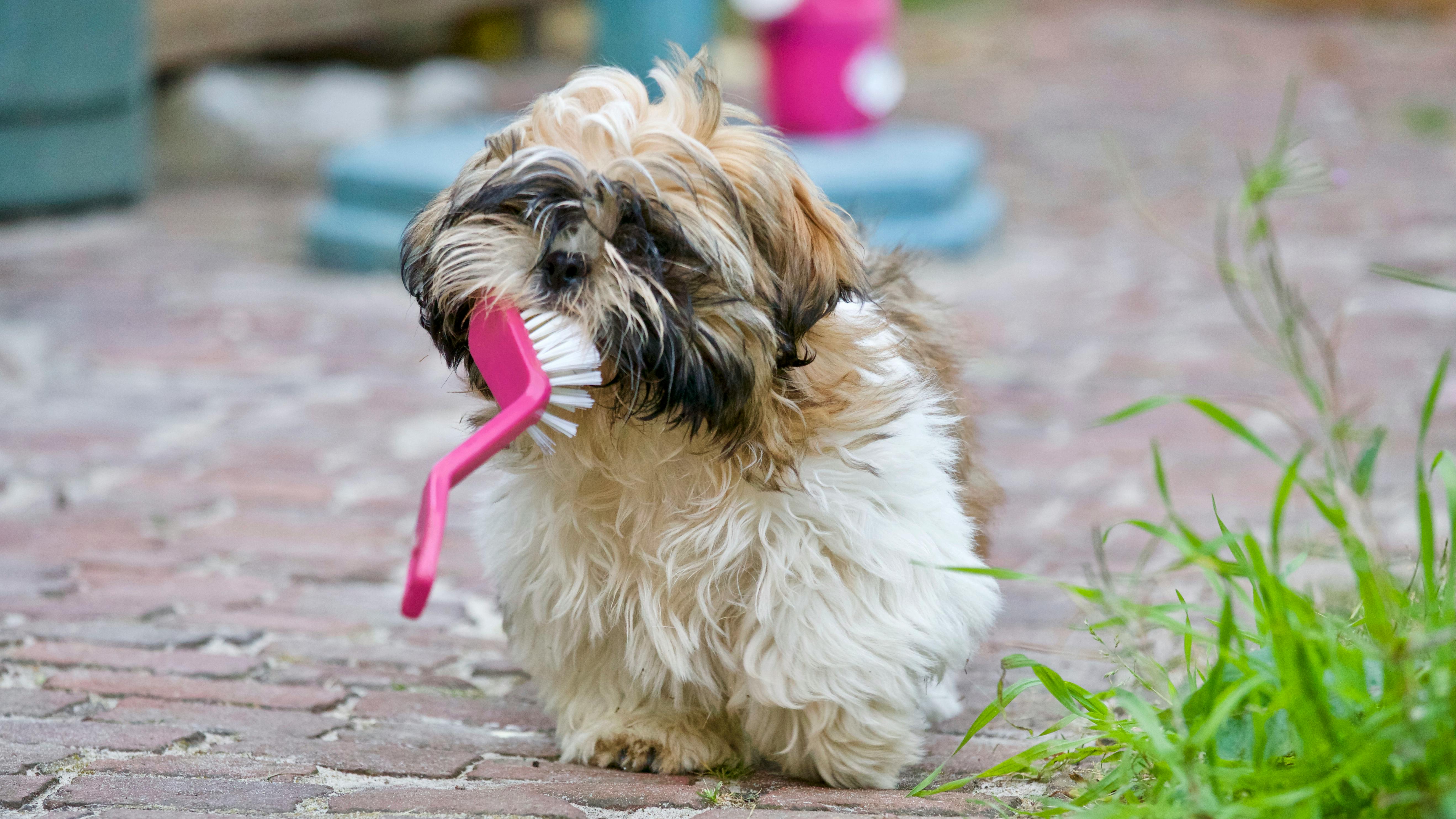Dog tear stains are a cosmetic problem, caused by an overflow of tears onto the cheeks, which is most obvious on dogs with white and other light color coats. Tear accumulation on facial hair can lead to matting of the hair, skin irritation and possibly infection. Hair can act like a wick, drawing the tears out of the eye. This is correctable by removing the hair, keeping the area clean and removing accumulated material or crusts. If a skin lesion or any type of eye infection or problem is suspected, see your veterinarian.
Face hair is a breeding ground for bacterial and yeast growth.
You need to take steps to eliminate any bacterial or yeast infections. The most common is “red yeast”, associated with reddish-brown facial stains and possibly a moderate to strong odor, as bacteria on hair and skin react with the clear tears.
If you plan on purchasing a puppy and the potential for chromodacryorrhea (dog tear stains) is an issue for you, observe the mother, sire and others in the lineage.
Many specialists believe the individual structure around the eye area plays a significant role in dog tear stains. If so, then genetics may be the source of the problem. Miniature breeds, and Persian cats, often have more prominent eyes that stretch the eyelid and can cut off the drainage system. There is little that can be done to correct this. Sometimes the eyelids turn inward and block the drainage; this is surgically correctable. However, if you think surgery is too drastic and the problem isn’t that bad, try alternative methods that are less harsh.
Who has a predisposition towards dog tear stain problems?
Akita, American Bulldog, American Eskimo Dog, Bichon Frise, Brussels Griffon, Cairn Terrier, Chihuahua, Chinese Crested, Cocker Spaniel, Corgi, Dachshund, English Toy Spaniel, French Bulldog, Golden Retriever, Havanese, Japanese Chin, King Charles Cavalier Spaniel, Lhasa Apso, Lion Dog, Maltese, Maltipoos, Miniature Schnauzer, Papillion, Pekingese, Pomeranian, Saint Bernard, Sharpei, Shih Tzu and West Highland White Terrier.
Determine the source of tear and face stains. The dog tear stain issue is more than an appearance problem. Tear staining can be traced to health and diet, as well as genetics. Make sure there are no underlying health problems causing the excessive tearing and staining.
Keeping your dog healthy is most important.
Dog tear stains might be a sign that your pet is ill. Ear infections, eye infections, eye irritations, allergies, yeast infections, and inflammation of the duct system are all possible reasons. These conditions are often painful and should be addressed immediately by your veterinarian.
Diet changes or minerals in drinking water can cause dog tear stains. Mineral issues can be remedied by the dog drinking distilled or reverse osmosis purified water.
Food sources or even plastic food bowls may be causing the staining that can be corrected. However, if you remove the tear stains and continue feeding a food that causes them, you won’t solve the problem.
Changing the dog’s pH slightly can do wonders in the tear stain war and help eliminate bacteria, the deep stain color and prevent yeast buildup. A preventative strategy best used once you have the tear stains removed or nearly removed.
500mg calcium carbonate, your basic antacid, twice daily helps change the pH of your dog’s system and aids in preventing yeast or infection, thus treating dog tear stains from the inside out. Vinegar will work much like the calcium antacid in changing the pH of drinking water. Add a teaspoon of white cider vinegar to your dog’s drinking water to control new tear stains. It may take a while for your pet to adapt to this water so start with a little less and gradually increase the amount of vinegar.
An option that can be discussed with your vet is a common eye drop called napthazoline, which dilates the tear ducts so more tears flow where they are supposed to instead of over the lids and onto the face.
Another possibility is to put your dog on a very low dose of antibiotics which will eliminate bacterial overgrowth. However, this should be a last resort, not used for continued treatment, and not be considered for puppies without their adult teeth.
Dog tear staining is often more complex than simple answers offer.
Veterinary consultation is appropriate in determining the source of a dog tear staining problem. Have your vet give the dog a complete exam to rule out any serious eye conditions before trying anything.
Home remedies do exist, using mixtures of milk of magnesia, corn starch, bleach, hydrogen peroxide, boric acid and lemon juice. However, harsh ingredients can irritate and make tearing worse. A stain remover should be free of alcohol or bleach. If such ingredients aren’t mixed properly, using precisely the right strength, and applied safely, you could potentially harm your dog.
No solution should be allowed to wick through the facial hair or splash into the pet’s eye, or into the eye area. For this reason, caution suggests you look to over-the-counter products, and refrain from using these home formulas.
Use a quality over-the-counter dog tear stain remover to safely, effectively and gently minimize the condition for a “satisfactory enough” rather than complete elimination result. Unless your pet is a show dog, this is not really a serious issue. A protective sterile ophthalmic ointment under the eyes, when applying stain remover, is an excellent idea. It will keep the eyes comfortable because the filmy barrier prevents irritation.




